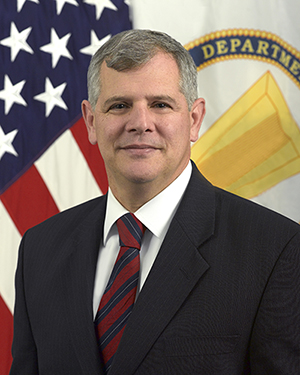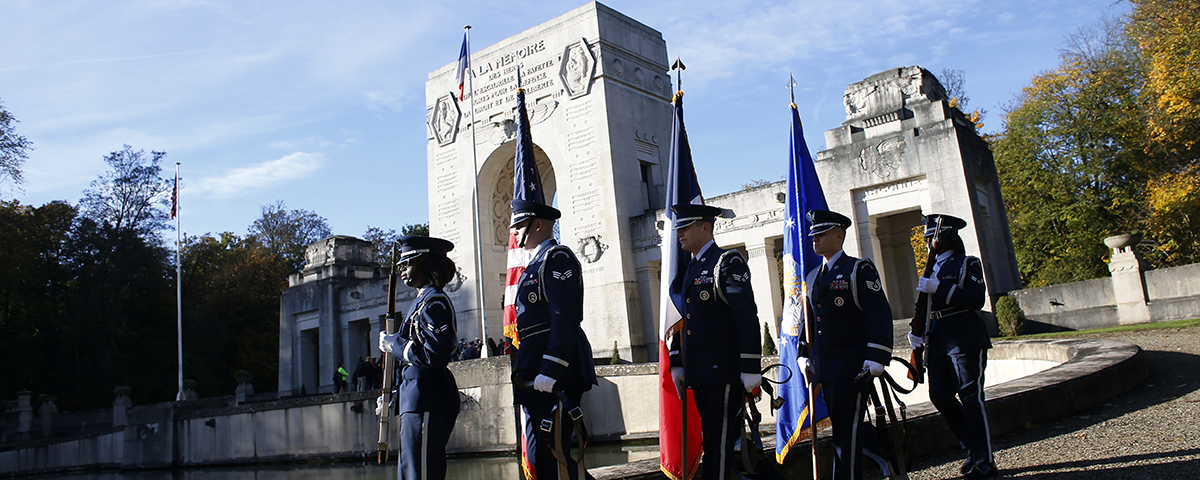Established by Congress in 2013, the World War I Centennial Commission is charged with planning, developing and executing programs to commemorate the centennial of World War I. Chairing the commission is historian, author, battlefield tour leader and retired U.S. Army Colonel Robert J. Dalessandro. Following in the footsteps of his grandfathers, who served in World War I, Dalessandro was commissioned in the U.S. Army after graduating from the Virginia Military Institute. He has since held a range of staff and leadership positions in the military and government. Dalessandro is a former director of the U.S. Army Center of Military History and remains deputy secretary of the American Battle Monuments Commission.

What are the origins of the World War I Centennial Commission?
The commission was created by an act of Congress. It is unusual in that it’s bipartisan and a congressional commission, not a presidential one. There were appointments to the commission by the president, by the majority and minority leaders of both the House and Senate, by the Veterans of Foreign Wars and the American Legion, and by the National World War I Museum in Kansas City.
What is its mission?
Our number one mission to educate the American people about the nation’s participation in World War I. We do that through a variety of “sub missions,” one of which is to coordinate events nationwide. We set up a vigorous series of programs throughout the United States, and we make recommendations to the president and Congress on which events they should attend. Another of our missions is to revitalize Washington, D.C.’s Pershing Park and make it a National World War I Memorial in conjunction with the national memorial in Kansas City.
What is the relationship between the commission and the World War I Memorial in Kansas City?
The memorial’s director, Matthew Naylor, is one of our commissioners. We are linked with them in every way, and we feel strongly there are in fact two National World War I Memorials—the one in Kansas City and the one we’re working on in Washington, D.C.
What role do social media play in your programs?
“Millennials” are part of our core audience in terms of educational outreach. We want them to know World War I was not a conflict fought only by foreign powers with no American involvement. We have a solid following on Facebook, and we have a presence on Twitter. We have also leveraged other social media outlets, including Instagram and Tumblr, and it has worked very well for us.
We try to find “hook” stories—something in the news that in some way relates to a facet of World War I, like the Lafayette Escadrille centennial. They’re mostly human-interest stories about individuals and topics young people can relate to.
How does the commission partner with states?
The education process works best when it works upward from the state level rather than down from the federal level. There are organized World War I centennial commissions in 48 of the 50 states that are already doing a lot of things. One of the main avenues of approach is what we refer to as 100 Cities/100 Memorials—an effort to restore at least two World War I memorials in every state and to get school students engaged in the restoration process. We want young people to go to the memorials, help restore them and at the same time learn about the people whom the memorials honor. Because we have lists of every American casualty of World War I, we can tell people of each community about folks from their town who perished in the war. It makes the lost very real to young people learning about them.
What support do you offer interested communities?
We’re trying to engage as many communities as possible. What we didn’t want to do was dictate what people should be learning or how local communities should approach the education process. We encourage local historical societies to come up with programs we could help them with and advertise for them. We have resources—not the least of which is a pool of eminent historians, all more than willing to visit communities. We also have a teacher’s guide to World War I we disseminated to 350,000 teachers across the country. That way, if a teacher wants to cover the war, they don’t have to go hunting for resources.
Is the commission coordinating with foreign organizations?
The countries we work closely with are France, Britain and Italy. We’re participating in keynote events on both sides of the Atlantic. These began this past April with the rededication of the Lafayette Escadrille Memorial and will go all the way through the November 2018 anniversary of the armistice that ended the war.
How can people participate in the commemoration?
First, through our website. It includes a calendar of events and a button that offers people the chance to volunteer in particular activities. There is also a button that will guide people to the website of their state commission, offering them the chance to find out about everything being done locally. We wanted to make it easy for people to participate in state or city activities, because many of the American divisions that took part in the war were National Guard organizations raised in specific states or regions.
What was the spark for a National World War I Memorial in D.C.?
Before his death in 2011 Frank Buckles—the last surviving American veteran of World War I—served as honorary chairman of the World War I Memorial Foundation. That organization and Buckles himself believed strongly a memorial should be erected on the National Mall. However, the mall is considered a completed work, meaning that to add a new monument would require years, perhaps decades, of effort by Congress and other agencies.
Over time many people came to see Pershing Park, in the center of Washington, D.C., as the best alternate location. In the 1970s the American Battle Monuments Commission had established a portion of the park as a memorial to the American Expeditionary Forces of World War I, and the memorial is centered on a statue of General John J. Pershing.
In 2015 Congress directed the park be redeveloped as a National World War I Memorial, but there has been opposition to the plan, because it would require significant alteration of the park’s original layout, designed by noted landscape architect M. Paul Friedberg. He is seeking to have the park added to the National Register of Historic Places, which would preclude its redevelopment. Until a final determination is made, we cannot move forward with the memorial, but I am cautiously optimistic it will be dedicated as planned on Nov. 11, 2018.
Given the thousands of World War I memorials nationwide, why erect another national memorial?
The Vietnam Veterans Memorial was really the first national war memorial built on the mall, and we seem to be working our way backward through history—we now have the Korean War Veterans Memorial and the National World War II Memorial. It seems to me there should be a capstone memorial to World War I—not one that honors only the American Expeditionary Forces, but one that honors everyone who served, the entire generation.
Why continue to educate people about World War I?
It is important because the conflict was such a pivotal moment in American history. It’s also important because it shows the people of our nation that we value service, and that even after they’re gone, we as a nation deem it important to pay tribute to them. We show the people who are willing to serve the nation that their service and sacrifices will be remembered and honored. MH





